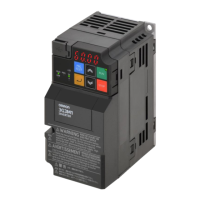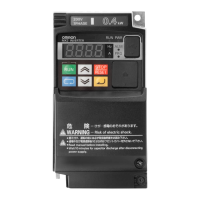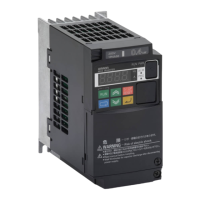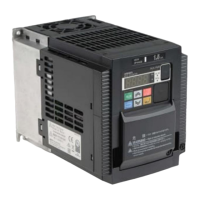If connecting a commercially available braking resistor or regenerative braking unit, this
may result in a moderate burn due to the heat generated in the braking resistor or
regenerative braking unit.
In case of a braking resistor, install a thermal relay that monitors the temperature of the
resistor. Configure a sequence that enables the inverter power to turn OFF when
unusual over heating is detected in the braking resistor or regenerative braking unit.
The inverter has high voltage parts inside which, if short-circuited, might cause damage
to itself or other property.
Place covers on the openings or take other precautions to make sure that no metal
objects such as cutting bits or lead wire scraps go inside when installing and wiring.
Install a stop motion device to ensure safety. Not doing so might result in a minor injury.
(A holding brake is not a stop motion device designed to ensure safety.)
Be sure to confirm safety before conducting maintenance, inspection or parts
replacement.
A breakdown of the built-in braking transistor could result in braking resistor heating or
damage to the inverter's internal units. Shut off the main power of the inverter using
Braking transistor broken signal (DBAL).
A breakdown of the built-in braking transistor or misconnection of the braking resistor
could result in braking resistor heating or damage to the inverter's internal units.
If the inverter does not start up or continue being undervoltage (LU) after the main
power of the inverter is turned ON, shut off the main power of the inverter.
When installing the product, use only the specified screws.
Not doing so may result in fire or accidents.
Do not install or operate an inverter with damaged external or internal components.
Doing so may result in injury, fire or accidents.
Prevent lint, paper fibers, sawdust, dust, metallic chips, or other foreign materials from
getting into the inverter or from accumulating on the cooling fin.
Not doing so may result in fire or accidents.
Support the inverter case or cooling fin instead of the surface cover during
transportation.
Not doing so may result in injury due to the inverter dropping.
The inverter, motor and wiring generate electric noise. Be careful about malfunction of
the nearby sensors and devices. Take noise control measures to prevent them from
malfunctioning.
Not doing so may result in accidents.
The inverter has an overload protection function. Set the protection level using
parameters.

